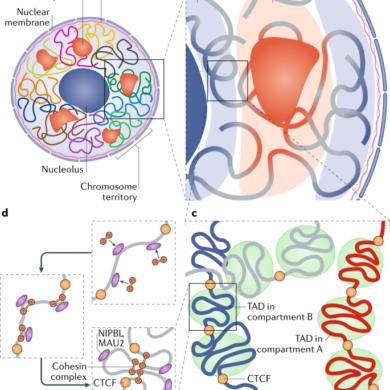DANIEL LUSK | BLOGGER | SQ ONLINE (2018-19)
A while back, I missed a lecture. I think it was for a chemistry class, but I’m not sure. There was no podcast, so I came into the following lecture determined to locate a friendly face and ask for lecture notes to replace what I had missed. I asked a stranger who sat next to me if I could photograph theirs. And then something odd happened. They took a long, thoughtful pause. The pained look on my new acquaintance’s face made clear their dilemma. They didn’t want me to have their notes because they didn’t want me to get caught up. Helping me could hurt them. So it goes in a curved STEM class.
At UC San Diego, many students live and breathe competition. They wake up ready to wreck curves and sleep on their books. They aspire to the next level of whatever they pursue, be it law school or medicine or a killer engineering job.

An uncomfortable visual metaphor (source)
But is competition healthy? Especially at this level?
When I kicked off looking into this topic, I popped open Google Scholar and set to work trying to build a baseline understanding of all of this. I started with the question “Why do we play games?”. After spending about an hour reading through a 17-page meta-analysis on the question, I determined the scientific consensus to be something like “because we like them”. This answer, although very well supported, was hilariously useless. So, I adjusted my query to “Why do we play sports?”. This netted more interesting results, including a long discourse on competing evolutionary views on human society and cooperation. Unfortunately, despite the read being deeply entertaining and raising intriguing questions, I still did not have anything for this blog. Finally, I remembered a trick I learned while researching for one of my previous articles. Business researchers love finding ways to make workers more productive. And just like that I had my search. The final search “healthy workplace competition” brought me to a 9 page long, fascinating paper on gamification and competition, the results of which I will boil down today (1, 2, 3).

There’s an ongoing quest to achieve maximum worker efficiency (source)
Dr. Chris Perryer and his colleagues at the University of Western Australia studied employee engagement, a concept which I’ll simplify as motivation and participation in competition and productivity within the work environment. Two key outcomes are interesting in the context of our school environment.
First, competition only tends to help increase engagement in people who are already competitive. For those who are not naturally competitive, competition can feel very defeating. Perryer’s paper suggests this may result from how participants find motivation to begin with. How we are motivated can be broken down into intrinsic and extrinsic factors. Intrinsic motivation encompasses motivations such as personal satisfaction, genuine interest, and gratefulness. Extrinsic factors encompass game elements like points, leaderboard position, or even trophies and badges. Competitive people may already be motivated extrinsically. However, the study suggests that people find difficulty in relying on both forms of motivation at once– intrinsically motivated, non-competitive participants struggled to adjust to newly introduced workplace competition (3).
This fits with the learning curve many of us experienced arriving in college. Success for me in my tiny high school was driven largely by intrinsic motivators and through the mutual support of my classmates and teachers. Success in college requires much more individualism and competitive drive. It can be a hard skill to learn. Here’s where the second outcome of the study can help.
The second outcome the study demonstrated was that cooperativity can help non-competitive participants begin to enjoy the competition. To paraphrase: you need a team. By working in teams towards a common goal or against a common opponent, non-competitive individuals build social connections and are motivated to contribute (3).
I find these to be pretty amazing analogs to the school environment. When I work alone in a class, I often really struggle to engage with the content. I feel overwhelmed, and sometimes feel intimidated by exam averages and grading rubrics. But when I have a study group, the whole dynamic changes. My mood improves, I engage with the class better, and I have people to discuss and grow with. I talked a few weeks back about the need for human connection, and I think this fits right in line with it.
So, I’ll circle back to the original question: is competition healthy? As usual, science finds no yes or no answer. For some, it seems it can be. But for others, it can be harmful. If you’re in that second camp, the problem with competition lies in its isolation. So build a team. Join a study group. The research shows that you will probably enjoy the competition more, and you may even find more success because of it.
[hr gap=”0″]
Work Cited
(1) Hamari, Juho, and Lauri Keronen. “Why Do People Play Games? A Meta-Analysis.” International Journal of Information Management, vol. 37, no. 3, 2017, pp. 125—141., doi:10.1016/j.ijinfomgt.2017.01.006.
(2) Kniffin, Kevin M., and Michelle Scalise Sugiyama. “Toward a Natural History of Team Sports.” Human Nature, vol. 29, no. 3, 2018, pp. 211—218., doi:10.1007/s12110-018-9322-6.
(3) Perryer, Chris, et al. “Enhancing Workplace Motivation through Gamification: Transferrable Lessons from Pedagogy.” The International Journal of Management Education, vol. 14, no. 3, 13 July 2016, pp. 327—335., doi:10.1016/j.ijme.2016.07.001.
(4) Feature Image

